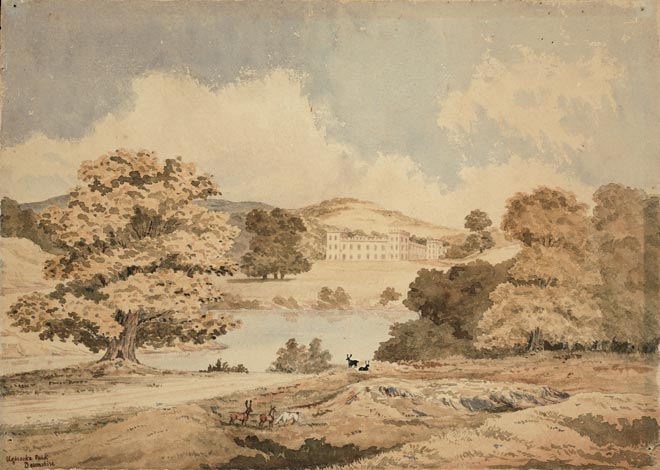
Large unproductive landholdings were a feature of England in the 19th century. Economists at the time pointed out that this did not lead to optimal use of land. Owners of large holdings could just sit on their land and benefit from public works. For example if a railway was built nearby, land prices rose. This increase in wealth without any improvements being made to the property was referred to by economists as the ‘unearned increment’. Politicians saw such windfalls as things that should be taxed. This painting, featuring Ugbrooke Park in Devonshire, was done by Frederick Weld in 1852 – probably aboard the ship True Briton, which arrived at Wellington on 18 December 1852.
Te whakamahi i tēnei tūemi
Alexander Turnbull Library
Reference:
A-269-025
Watercolour by Frederick Aloysius Weld
Permission of the Alexander Turnbull Library, National Library of New Zealand, Te Puna Mātauranga o Aotearoa, must be obtained before any re-use of this image.






Tāpiritia te tākupu hou